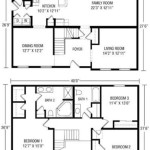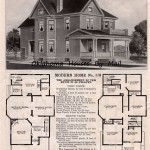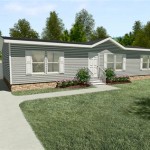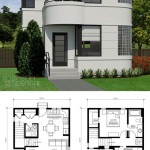Plans For Building Bird Houses refer to detailed instructions and templates that guide individuals in constructing nesting boxes specifically designed to attract and provide shelter for birds. These plans encompass all aspects of birdhouse construction, including materials, dimensions, design features, and installation techniques.
Building bird houses offer numerous benefits, including providing nesting sites for birds, supporting their populations, and enhancing biodiversity. The designs can vary based on the target bird species, local climate, and available materials. Whether you’re an experienced bird enthusiast or a newcomer to the hobby, having well-defined plans is essential for creating bird houses that meet the specific needs of feathered visitors.
In the following sections, we will delve into the key elements of Plans For Building Bird Houses, exploring the different considerations, design principles, and practical steps involved in constructing bird-friendly nesting boxes.
When drafting Plans For Building Bird Houses, it’s crucial to consider the following key points:
- Target bird species
- Local climate
- Materials selection
- Proper dimensions
- Ventilation and drainage
- Predator protection
- Installation techniques
- Maintenance and monitoring
These elements ensure that the bird houses provide suitable nesting environments, promote bird populations, and contribute to a healthy ecosystem.
Target bird species
The selection of birdhouse plans is heavily influenced by the target bird species you aim to attract. Different bird species have specific nesting preferences regarding the size, shape, and design of the birdhouse. Matching the birdhouse to the target species’ requirements increases the chances of successful nesting and occupation.
- Size: The dimensions of the birdhouse, including its height, width, and depth, should accommodate the target bird’s body size and nesting habits. For example, smaller songbirds like chickadees and wrens prefer smaller birdhouses, while larger birds like bluebirds and woodpeckers require more spacious ones.
- Shape: Birdhouses come in various shapes, including rectangular, triangular, and circular designs. Certain bird species may have a preference for a particular shape. For instance, bluebirds often favor rectangular or gourd-shaped birdhouses, while wrens prefer enclosed, domed structures.
- Entrance hole size and placement: The size and placement of the entrance hole are crucial for allowing the target bird species to enter and exit the birdhouse comfortably. The diameter of the hole should be appropriate for the size of the bird, and its position on the birdhouse can influence which species are attracted to it.
- Materials: The choice of materials for the birdhouse should consider the target bird species’ preferences and the local climate. Wood, plastic, and gourds are commonly used materials, each with its own advantages and suitability for different bird species.
By carefully considering the target bird species and their specific nesting requirements, you can select or design birdhouse plans that will provide an optimal nesting environment and increase the likelihood of attracting the desired birds to your backyard or garden.
Local climate
When designing and building bird houses, it’s essential to consider the local climate conditions to ensure the well-being of the nesting birds. Different climates pose unique challenges and require specific design considerations for bird houses.
- Temperature regulation: Bird houses should provide adequate insulation to protect nesting birds from extreme temperatures. In cold climates, thicker walls and insulation materials are necessary to maintain warmth inside the birdhouse. Conversely, in hot climates, ventilation and shade are crucial to prevent overheating. Proper ventilation can be achieved through strategically placed holes or vents, while shade can be provided by overhangs or external structures.
- Moisture management: Bird houses should be designed to prevent moisture buildup, which can lead to mold growth and other health issues for the birds. Proper ventilation and drainage are essential. Ventilation can be enhanced through holes or vents, and drainage can be improved by slightly tilting the birdhouse forward and providing drainage holes in the floor.
- Precipitation protection: Bird houses should protect nesting birds from rain, snow, and other forms of precipitation. The roof of the birdhouse should have sufficient overhang and be sloped to prevent water from entering. Additionally, the entrance hole should be placed to minimize the risk of water penetration.
- Wind protection: In windy areas, bird houses should be securely mounted to prevent them from being blown over or damaged. Proper mounting involves choosing a stable location and using sturdy materials for the birdhouse and its mounting system.
By considering the local climate and incorporating appropriate design features, you can create bird houses that provide a safe and comfortable nesting environment for birds, regardless of the climate conditions.
Materials selection
The choice of materials for building bird houses is an important consideration that can impact the durability, effectiveness, and safety of the nesting environment for birds. Different materials have their own unique properties and characteristics, making them more or less suitable for bird house construction.
- Wood: Wood is a classic and commonly used material for bird houses due to its natural insulation properties, ease of workability, and availability. Cedar, pine, and cypress are popular choices for bird houses because they are naturally resistant to rot and decay. However, wood requires proper treatment and maintenance to ensure its longevity and prevent moisture damage.
- Plastic: Plastic is a lightweight and durable material that is resistant to moisture and rot. It is also easy to clean and maintain. However, plastic bird houses can become hot in direct sunlight and may not provide sufficient insulation in cold climates.
- Metal: Metal is a durable and weather-resistant material that can provide excellent protection from the elements. However, metal bird houses can become extremely hot in direct sunlight and may not be suitable for all climates. Aluminum and galvanized steel are commonly used metals for bird house construction.
- Gourds: Gourds are natural materials that can provide unique and decorative bird houses. They are lightweight and have good insulation properties. However, gourds require careful preparation and treatment to ensure they are suitable for bird nesting.
When selecting materials for building bird houses, it is important to consider factors such as the local climate, the target bird species, and the desired lifespan of the bird house. By choosing appropriate materials and employing proper construction techniques, you can create durable and effective bird houses that will provide a safe and comfortable nesting environment for birds.
Proper dimensions
The proper dimensions of a bird house are crucial for providing a suitable nesting environment for the target bird species. The size and shape of the bird house should accommodate the bird’s body size, nesting habits, and specific requirements. Incorrect dimensions can make the bird house uncomfortable, unsafe, or even unusable for nesting.
- Floor space: The floor space of the bird house should provide enough room for the bird to move around comfortably and incubate its eggs. The minimum floor space recommended is 4 inches by 4 inches, but larger birds may require more space. Ensure that the floor is level to prevent eggs from rolling.
- Height: The height of the bird house should allow the bird to stand upright without touching the top or bottom of the house. The height also affects the internal temperature of the bird house, with taller houses being cooler and shorter houses being warmer.
- Entrance hole size: The size of the entrance hole should be large enough for the bird to enter and exit easily, but small enough to prevent larger birds or predators from entering. The diameter of the hole should be approximately 1.25 inches for small birds like chickadees and wrens, and up to 2 inches for larger birds like bluebirds and woodpeckers.
- Entrance hole placement: The entrance hole should be placed near the top of the bird house, high enough above the floor to prevent nestlings from falling out. It should also be positioned to face away from prevailing winds and direct sunlight.
By adhering to the proper dimensions for the target bird species, you can create a bird house that provides a comfortable and safe nesting environment, promoting successful nesting and breeding.
Ventilation and drainage
Proper ventilation and drainage are essential elements in the design of bird houses to ensure the health and well-being of nesting birds. Without adequate ventilation, moisture can accumulate inside the bird house, leading to mold growth and respiratory problems for the birds. Similarly, poor drainage can result in water buildup, which can cause the nest to become damp and uncomfortable, potentially leading to egg or chick mortality.
- Ventilation: Ventilation is crucial for regulating temperature and humidity levels inside the bird house. It allows fresh air to circulate, reducing the risk of moisture buildup and mold growth. Proper ventilation can be achieved through the use of vents or holes placed strategically around the bird house. These vents should be designed to allow air to flow through the house without creating drafts that could chill the birds.
- Drainage: Adequate drainage is essential for preventing water accumulation inside the bird house. This is particularly important in areas with high rainfall or humidity. Drainage holes should be incorporated into the floor of the bird house to allow excess water to drain out. These holes should be small enough to prevent nestlings from falling through but large enough to effectively drain water.
- Roof overhang: A roof overhang helps to protect the entrance hole from rain and snow, preventing water from entering the bird house. It also provides shade, keeping the interior of the bird house cooler in hot weather.
- Predator guards: Predator guards can be placed around the entrance hole to prevent predators from entering the bird house. These guards should be designed to allow the target bird species to enter and exit easily while deterring larger birds and predators.
By incorporating proper ventilation and drainage features into the design of your bird houses, you can create a healthy and comfortable nesting environment for birds, increasing the chances of successful nesting and breeding.
Predator protection
Protecting bird houses from predators is crucial for ensuring the safety and success of nesting birds. Predators such as cats, snakes, raccoons, and squirrels can pose a significant threat to birds and their eggs or chicks. Incorporating effective predator protection measures into the design and placement of bird houses can significantly increase the chances of successful nesting and fledging.
One effective method of predator protection is the use of predator guards. Predator guards are physical barriers placed around the entrance hole of the bird house to prevent larger birds and predators from entering. These guards can be made from various materials, such as metal, plastic, or wood, and are designed to allow the target bird species to enter and exit easily while deterring predators.
Another important aspect of predator protection is the placement of the bird house. Avoid placing bird houses in areas that are easily accessible to predators, such as near trees or shrubs that provide climbing access. Instead, choose locations that are open and have good visibility, making it easier for birds to spot potential predators and take evasive action.
In addition to physical barriers and careful placement, consider using predator deterrents to further enhance the safety of nesting birds. Predator deterrents can include reflective tape, predator decoys, or motion-activated lights. These deterrents can help to scare away predators and make them less likely to approach the bird house.
By implementing a combination of predator protection measures, including predator guards, careful placement, and predator deterrents, you can create a safe and secure nesting environment for birds, increasing their chances of successfully raising their young.
Installation techniques
Proper installation of bird houses is crucial for ensuring their stability, longevity, and accessibility for the target bird species. Careful consideration should be given to the mounting location, height, and method of installation to provide a safe and suitable nesting environment for birds.
- Mounting location: The mounting location for the bird house should be carefully chosen to provide the best possible conditions for nesting birds. Ideal locations are typically open areas with good visibility and protection from predators. Avoid placing bird houses near trees or shrubs that could provide access to climbing predators. Additionally, ensure that the chosen location receives adequate sunlight for warmth and dryness, while also offering some shade to prevent overheating.
- Height: The height at which the bird house is installed can influence its attractiveness to different bird species and provide protection from predators. Generally, bird houses should be placed at least 5 feet above the ground to deter ground-based predators and provide a sense of security for nesting birds. Higher mounting heights may be necessary in areas with known predator activity.
- Mounting method: The method of installation should ensure the stability and longevity of the bird house while minimizing disturbance to the nesting birds. Common mounting methods include attaching the bird house to a tree trunk, fence post, or the side of a building. When mounting the bird house, use sturdy screws or bolts to securely fasten it in place. Avoid using nails, as they can loosen over time and compromise the stability of the structure.
- Nest box orientation: The orientation of the nest box should be considered to provide the best possible conditions for nesting birds. Ideally, the entrance hole should face away from prevailing winds and direct sunlight to protect the birds and their eggs or chicks from harsh weather conditions. Additionally, orienting the entrance hole towards a natural food source or water source can be beneficial for the nesting birds.
By carefully following these installation techniques, you can ensure that your bird houses are properly positioned and securely mounted, providing a safe and suitable nesting environment for birds to raise their young.
Maintenance and monitoring
Regular maintenance and monitoring of bird houses are essential to ensure their continued functionality and suitability for nesting birds. Proper care and attention can extend the lifespan of bird houses and increase their attractiveness to birds.
One important aspect of maintenance is to periodically clean the bird house to remove old nesting materials, droppings, and debris. Cleaning should be done outside the nesting season, typically in the fall or winter. Use a mild soap solution and warm water to gently clean the interior surfaces of the bird house. Avoid using harsh chemicals or detergents, as these can leave behind harmful residues.
It is also important to inspect the bird house for any signs of damage or deterioration. Check for cracks, holes, or loose parts that could compromise the structural integrity of the house. If any damage is found, it should be repaired promptly using appropriate materials and techniques. Regular inspections can help to identify potential issues early on, preventing further damage and ensuring the safety of nesting birds.
Monitoring the bird house during the nesting season can provide valuable insights into the nesting activity and success of the birds. Observe the bird house from a distance to avoid disturbing the birds. Note any activity around the nest box, such as birds entering or exiting, or the presence of eggs or chicks. Monitoring can help you assess the nesting progress and identify any potential problems or threats to the nesting birds.
By following these maintenance and monitoring practices, you can help to maintain the quality and functionality of your bird houses, ensuring that they continue to provide a safe and suitable nesting environment for birds.










Related Posts








